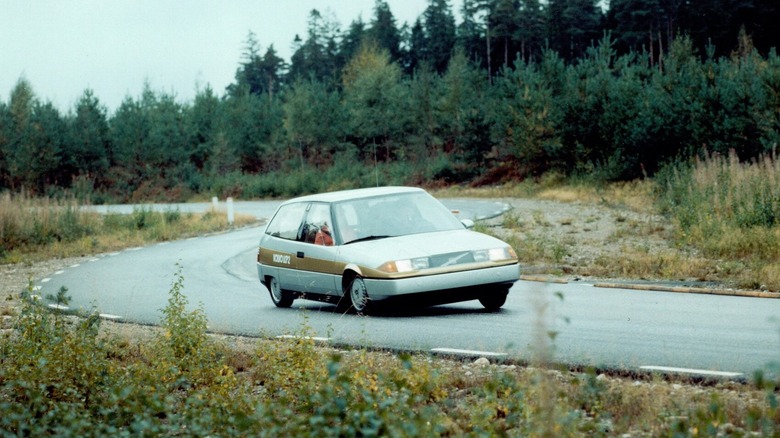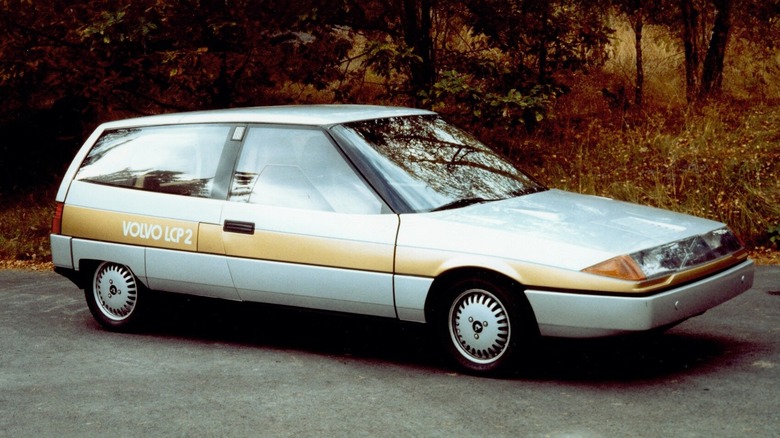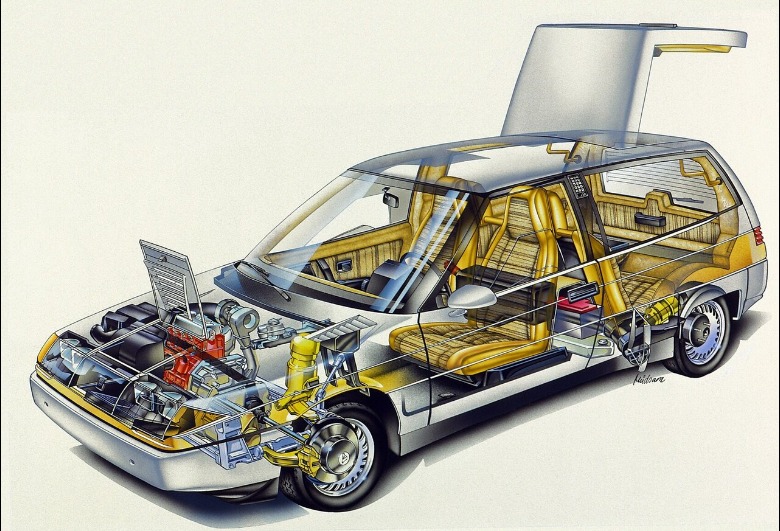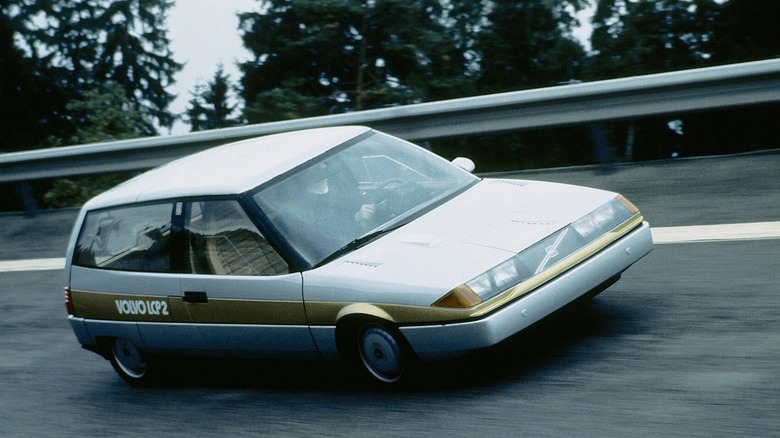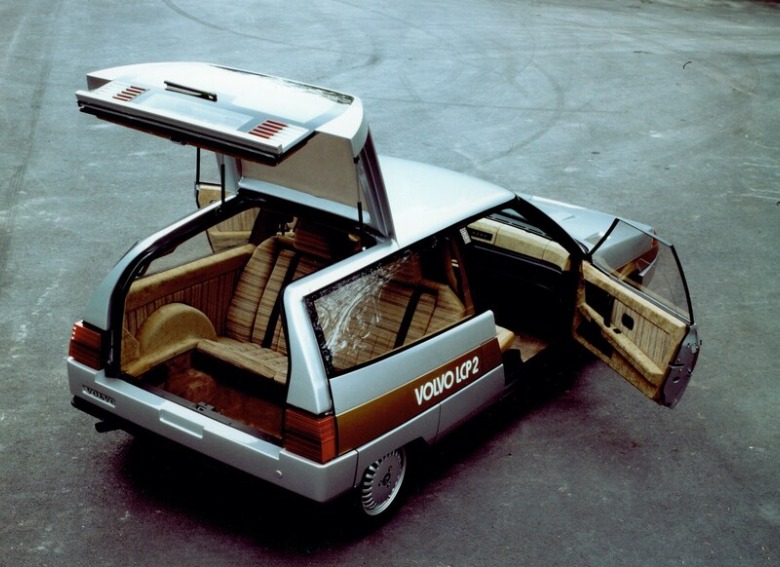The Forgotten Concept Car That Volvo Found Hiding In Their Museum
Volvo has a habit of migrating the design of its concept cars to its production models. Take the Volvo VESC, for instance. First unveiled at the 1972 Geneva Auto Show, the VESC or Volvo Experimental Safety Car is the basis for the brand's popular 200/240 Series that went on sale from 1974 to 1993. The 200 Series became the longest-lasting Volvos in the brand's history, selling close to 2.9 million units in a 19-year production run, the brand noted.
The Volvo 240 came with innovative safety features like semi-passive seat belts, airbags, headlamp washers, anti-lock brakes (ABS), and rear engine mounts that allow the engine to slide under the car during a frontal impact, among others. The Volvo 240 was impressively safe that it became the NHTSA's official reference car for assessing the road safety of other vehicles on American roads.
Then we have the Volvo SCC or Safety Concept Car that debuted at the 2001 Detroit Auto Show. Developed in cooperation with then-Volvo owner Ford, the SCC's shapely hips and unique glass tailgate made way to the C30. And who could forget the Volvo 480's quirky three-door, four-seat hatchback body, a design it got from the Volvo LCP 2000 concept car of 1983?
Volvo LCP 2000: Beyond its time
According to Volvo, the LCP 2000 (Light Component Project) concept previews the future of yesteryears, a car made of lightweight, sustainable materials powered by alternative fuels and efficient engines. Like the Volvo 480, Volvo started experimenting with the idea of "a driveable prototype for a future lightweight car that was fuel-efficient, yet at the same time very safe and practically usable by the year 2000." Remember, this was the late 1970s, and Volvo wanted a concept that would survive future safety and emissions regulations while remaining the definitive Volvo in terms of safety.
Engineer Rolf Mellde headed the LCP 2000 project, and the team needed to achieve three goals. First, the car should accommodate two passengers at the very minimum. Next, it needs to have a max weight of 1,543 pounds (700 kg). Lastly, it needs to sip fuel at 4 liters per 100 km (58.8 mpg). All those numbers were unheard of in 1979 when Mellde and his team began work on the concept, so they had to take advantage of new materials and new technologies to make it work.
Clean and Green
The Volvo LCP 2000 has unique carbon fiber door frames, while the body consists of lightweight materials like magnesium, aluminum, and plastic to reduce weight. Under the hood was a 1.3-liter 50-horsepower three-cylinder magnesium engine, while Volvo also made a 1.4-liter 90-horsepower three-cylinder engine with a cast-iron head. No matter which, the engines could run on any fuel like rapeseed oil, said Volvo.
In addition, the LCP 2000 is a front-wheel-drive car and comes with either a five-speed manual or an electronic CVT (continuously variable transmission). Not only did the Volvo 480 inherit the LCP 2000's wedgy styling, but it also got the concept's front-wheel drivetrain, making it the first Volvo production car to have front-wheel drive and a transverse engine.
Volvo made four LCP 2000 concept cars. After presenting it at a seminar in Stockholm in the late spring of 1983, the concept found its way to the Volvo Museum to gather dust. Last February 2022, Volvo posted on its Facebook page that it unearthed the LCP 2000 "out of the hiding places" of its museum. The automaker adds that the concept car will soon make it to auto shows for everyone to see and admire.
